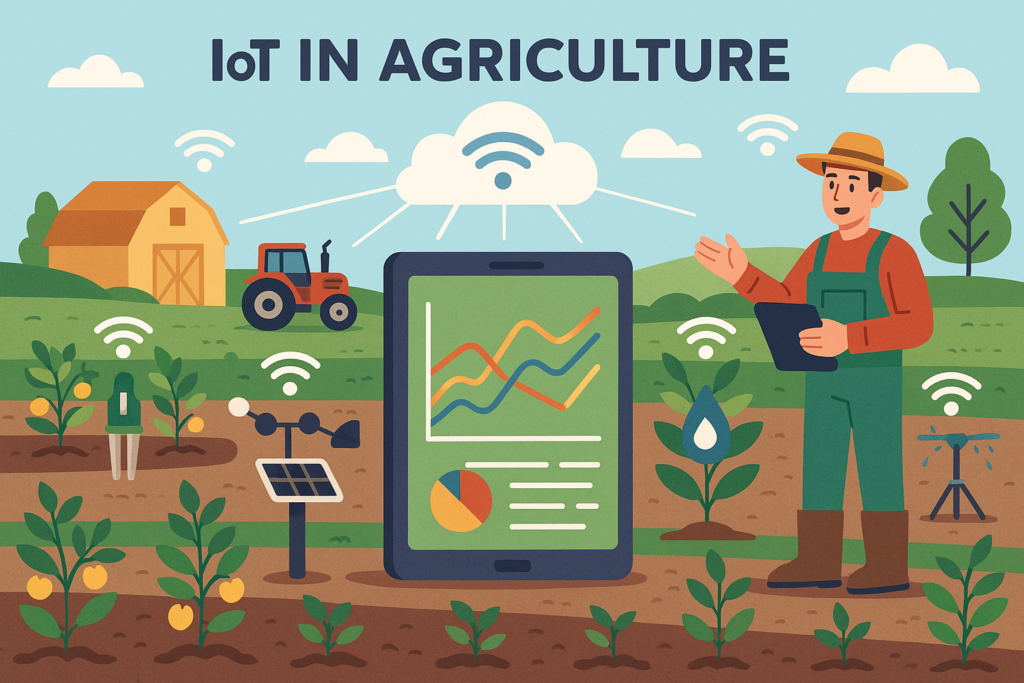The Internet of Things (IoT) is ushering in a new era of agriculture, transforming traditional farming practices into data-driven enterprises that significantly enhance productivity, efficiency, and sustainability. At its core, IoT encompasses the interconnectivity of various devices, sensors, and applications, which collectively serve to create a comprehensive network that facilitates real-time data collection and analysis across agricultural operations. This technology empowers farmers to monitor various factors affecting crop and livestock health, resulting in informed decision-making that ultimately leads to higher yields and more sustainable practices.
One of the most notable applications of IoT in agriculture is precision agriculture, a farming management concept that utilizes technology to observe, measure, and respond to variability in crop and soil conditions. Through the deployment of soil moisture sensors, temperature gauges, and crop health monitoring systems, farmers can access important data that helps them optimize irrigation schedules, reduce water usage, and manage nutrients more effectively. This precision not only boosts crop health but also conserves vital resources, setting the stage for more sustainable agricultural practices that are critical in an era of climate change.
In addition to crop management, IoT is revolutionizing livestock farming by improving the care and management of animals. Wearable devices and sensors provide real-time data on the health, location, and behavior of livestock, allowing farmers to track vital signs and identify anomalies that may indicate health issues. Early detection of illness enables prompt intervention, which can save livestock lives and reduce financial losses for farmers. Furthermore, the data collected can inform breeding programs and nutrition management, creating a more efficient and productive livestock operation that benefits farmers and enhances food supply reliability.

The integration of IoT technology not only enhances individual farm operations but also fosters greater collaboration within the agricultural industry. As technology providers work alongside farmers to develop tailored solutions that address specific challenges, a diverse ecosystem of innovative tools emerges. This collaboration facilitates the gradual adoption of advanced technologies such as data analytics, machine learning, and artificial intelligence, further transforming how agricultural information is analyzed and used. Through these advancements, farmers gain deeper insights into their operations, allowing them to make proactive rather than reactive decisions.
Moreover, the implications of IoT extend beyond the farm gate, impacting broader economic systems and contributing to food security on a global scale. As the world’s population continues to grow, agricultural efficiency becomes ever more crucial. IoT-equipped farms are better positioned to meet this increasing demand for food while minimizing environmental impact. By maximizing land use, minimizing resource waste, and reducing chemical inputs, IoT plays a vital role in the quest for a more sustainable agricultural model.
Such transformative potential, however, is accompanied by challenges that need addressing. Data security, technology accessibility, and the need for farmer education on IoT tools are critical factors that stakeholders must consider to ensure successful adoption. Policymakers, agricultural organizations, and technology companies must collaborate to create a supportive infrastructure that fosters innovation while addressing these challenges.
The Internet of Things is fundamentally reshaping agriculture, bridging the gap between technological advancement and traditional farming practices. As the agricultural landscape evolves, the adoption of IoT technologies will not only enhance operational efficiencies and crop yields but also pave the way for a more sustainable future in farming. By harnessing the power of connectivity and data-driven insights, agriculture can meet the pressing challenges of food security and environmental sustainability, ensuring that future generations inherit a resilient and productive agricultural system.